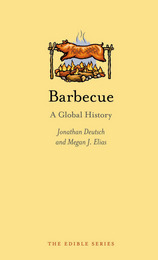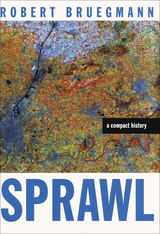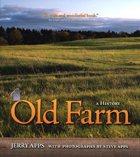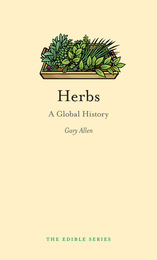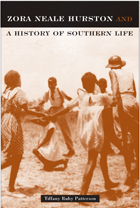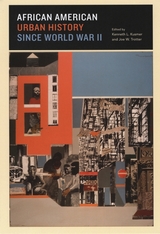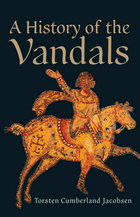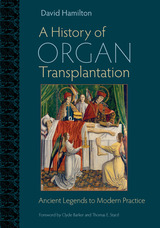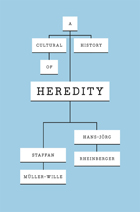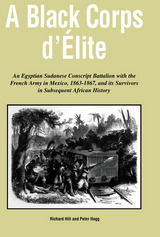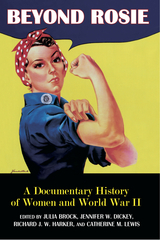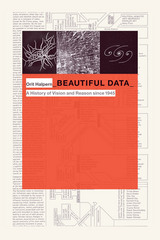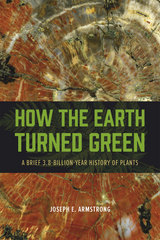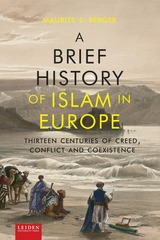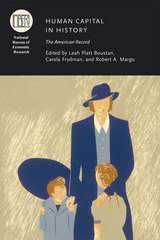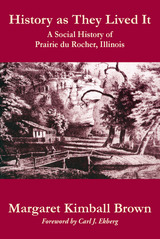Engaging and interesting historiesCollection by kdm (18 items)The history of some things, places, or people. Includes the following tags:
African Americans in literature, Barbecue, Brief History, Chocolate, Cities and towns, Cognition, Conflict, Cultural History, Documentary History, Egypt, Ekberg, Carl J., European intervention, 1861-1867, Finland, Funderburg, Anne Cooper, Genetics & Genomics, Global History, Growth, History, Local, Homes and haunts, Labor supply, Literature and history, Macroeconomics, Nordic Countries, North, Paleontology, Participation, Female, Plants, Social, Specific Ingredients, Surgery, Transplantation of organs, tissues, etc, Trotter, Joe W., Urban African Americans, Vision, Western
See More
|
Barbecue
by Jonathan Deutsch and Megan J. Elias
Reaktion Books, 2014
If there is one thing the United States takes seriously (outside of sports), it’s barbecue. Different in every region, barbecuing is an art, and Americans take pride in their special blend of slow-cooked meat, spices, and tangy sauces. But the US didn’t invent the cooking form, nor do Americans have a monopoly on it—from Mongolian lamb to Fijian pig and Chinese char siu, barbecue’s endless variations have circled the globe. In this history of this red-blooded pursuit, Jonathan Deutsch and Megan J. Elias explore the first barbecues of ancient Africa, the Arawak origins of the word, and define what it actually is. Traveling to New Zealand for the Maori’s hangi, Hawaii for kalua pig, Mexico for barbacoa de cabeza, and Spain for a taste of bull roast, Barbecue looks at the incredible variety of the food around the world. Deutsch and Elias also discuss barbecue’s status as a masculine activity, the evolution of cooking techniques and barbecuing equipment technology, and the growth of competitive barbecuing in the United States. Rounding out the book are mouthwatering recipes, including an 1877 Minneapolis recipe for a whole roast sheep, a 1942 pork spare ribs recipe from the Ozarks, and instructions for tandoori lamb chops and Chinese roast duck. A celebration of all things smoky, meaty, and delicious, Barbecue makes the perfect gift for backyard grillers and professional roasters.
1
|
Sprawl
by Robert Bruegmann
University of Chicago Press, 2005
As anyone who has flown into Los Angeles at dusk or Houston at midday knows, urban areas today defy traditional notions of what a city is. Our old definitions of urban, suburban, and rural fail to capture the complexity of these vast regions with their superhighways, subdivisions, industrial areas, office parks, and resort areas pushing far out into the countryside. Detractors call it sprawl and assert that it is economically inefficient, socially inequitable, environmentally irresponsible, and aesthetically ugly. Robert Bruegmann calls it a logical consequence of economic growth and the democratization of society, with benefits that urban planners have failed to recognize. In his incisive history of the expanded city, Bruegmann overturns every assumption we have about sprawl. Taking a long view of urban development, he demonstrates that sprawl is neither recent nor particularly American but as old as cities themselves, just as characteristic of ancient Rome and eighteenth-century Paris as it is of Atlanta or Los Angeles. Nor is sprawl the disaster claimed by many contemporary observers. Although sprawl, like any settlement pattern, has undoubtedly produced problems that must be addressed, it has also provided millions of people with the kinds of mobility, privacy, and choice that were once the exclusive prerogatives of the rich and powerful. The first major book to strip urban sprawl of its pejorative connotations, Sprawl offers a completely new vision of the city and its growth. Bruegmann leads readers to the powerful conclusion that "in its immense complexity and constant change, the city-whether dense and concentrated at its core, looser and more sprawling in suburbia, or in the vast tracts of exurban penumbra that extend dozens, even hundreds, of miles-is the grandest and most marvelous work of mankind." “Largely missing from this debate [over sprawl] has been a sound and reasoned history of this pattern of living. With Robert Bruegmann’s Sprawl: A Compact History, we now have one. What a pleasure it is: well-written, accessible and eager to challenge the current cant about sprawl.”—Joel Kotkin, The Wall Street Journal
“There are scores of books offering ‘solutions’ to sprawl. Their authors would do well to read this book.”—Witold Rybczynski, Slate
2
|
Old Farm
by Jerry Apps
photographs by Steve Apps Wisconsin Historical Society Press, 2013
One of the Midwest's best-loved authors tells the story of his land, from the last great glacier that dug out its valleys and formed its hills, to his own family's 40 year relationship with the beloved farm they call Roshara. In this quiet but epic tale, Apps describes the Native Americans who lived on the land for hundreds of years, tapping the maple trees and fishing the streams and lakes, as well as the first white settlers who tilled its sandy acres, plowing the native grasses that grew taller than their teams of oxen. For all their work, the farm proved tough to tame. Hardscrabble farming methods and hard luck often brought failure.
"From land that provided only a marginal living for its early owners, this place we call Roshara has provided much for my family and me," writes Apps. He and his wife and their children have cared for the farm not so much to make a living as to enhance their lives. Apps chronicles the family's efforts — always earnest, if sometimes ill-advised — to restore an old granary into living space, develop a productive vegetable garden, manage the woodlots, reestablish a prairie, and enjoy nature's sounds and silences. Breathtakingly beautiful color photographs by Apps's son, Steve (a professional photographer), highlight the ever-changing beauty of the land in every season and hint at the spiritual gifts that are the true bounty this family reaps from Roshara.
Central to Apps' work is his belief that the land is something to cherish and revere. Like Aldo Leopold before him, Apps sounds an inspirational call to readers to preserve wild and rural places, leaving them in better condition than we found them for future generations.
3
|
Herbs
by Gary Allen
Reaktion Books, 2012
Salsa and guacamole wouldn’t be the same without cilantro, and you can’t make pizza without oregano or a mojito without mint. You can use peppermint to settle an upset stomach, ease arthritis pain with stinging nettle, and heal burns and wounds with aloe vera. And then there is cannabis—perhaps the most notorious and divisive herb of all. Despite the fact that herbs are often little more than weeds, cultures around the globe have found hundreds of uses for them, employing them in everything from ancient medicines to savory dishes. While much has been written on cooking and healing with herbs, little has been told about the history of the plants themselves and the incredible journeys they have made. This book elucidates how these often overlooked plants have become a staple in our lives. Unlike spices that quickly traversed the globe through trade, Gary Allen shows that herbs were often hoarded by their cultivators and were central to distinctive regional dishes. He draws on his extensive knowledge of food history to examine herbs in new ways, making Herbs essential reading for any serious foodie. Filled with beautiful illustrations and delicious recipes, this book will complete the kitchen library.
4
|
Zora Neale Hurston
by Tiffany Ruby Patterson
Temple University Press, 2005
A historian hoping to reconstruct the social world of all-black towns or the segregated black sections of other towns in the South finds only scant traces of their existence. In Zora Neale Hurston and a History of Southern Life, Tiffany Ruby Patterson uses the ethnographic and literary work of Zora Neale Hurston to augment the few official documents, newspaper accounts, and family records that pertain to these places hidden from history. Hurston's ethnographies, plays, and fiction focused on the day-to-day life in all-black social spaces as well as "the Negro farthest down" in labor camps. Patterson shows how Hurston's work complements the fragmented historical record, using the folklore and stories to provide a full description of these people of these towns as active human subjects, shaped by history and shaping their private world. Beyond the view and domination of whites in these spaces, black people created their own codes of social behavior, honor, and justice. In Patterson's view Hurston renders her subjects faithfully and with respect for their individuality and endurance, enabling all people to envision an otherwise inaccessible world.
See More
5
|
African American Urban History since World War II
edited by Kenneth L. Kusmer and Joe W. Trotter
University of Chicago Press, 2009
Historians have devoted surprisingly little attention to African American urban history ofthe postwar period, especially compared with earlier decades. Correcting this imbalance, African American Urban History since World War II features an exciting mix of seasoned scholars and fresh new voices whose combined efforts provide the first comprehensive assessment of this important subject. The first of this volume’s five groundbreaking sections focuses on black migration and Latino immigration, examining tensions and alliances that emerged between African Americans and other groups. Exploring the challenges of residential segregation and deindustrialization, later sections tackle such topics as the real estate industry’s discriminatory practices, the movement of middle-class blacks to the suburbs, and the influence of black urban activists on national employment and social welfare policies. Another group of contributors examines these themes through the lens of gender, chronicling deindustrialization’s disproportionate impact on women and women’s leading roles in movements for social change. Concluding with a set of essays on black culture and consumption, this volume fully realizes its goal of linking local transformations with the national and global processes that affect urban class and race relations.
6
|
A History of the Vandals
by Torsten Cumberland Jacobsen
Westholme Publishing, 2012
The First General History in English of the Germanic People Who Sacked Rome in the Fifth Century AD and Established a Kingdom in North Africa The fifth century AD was a time of great changes in the Mediterranean world. In the early 400s, the Roman Empire ranged from the lowlands of Scotland to the Upper Nile and from Portugal to the Caucasus. It was almost at its widest extent, and although ruled by two emperors—one in the West and one in the East—it was still a single empire. One hundred years later, Roman control of Western Europe and Western North Africa had been lost. In its place, a number of Germanic kingdoms had been established in these regions, with hundreds of thousands of Germanic and other peoples settling permanently inside the former borders of the Western Roman Empire. One of the most fascinating of these tribes of late antiquity were the Vandals, who over a period of six hundred years had migrated from the woodland regions of Scandinavia across Europe and ended in the deserts of North Africa. In A History of the Vandals, the first general account in English covering the entire story of the Vandals from their emergence to the end of their kingdom, historian Torsten Cumberland Jacobsen pieces together what we know about the Vandals, sifting fact from fiction. In the middle of the fifth century the Vandals, who professed Arianism, a form of Christianity considered heretical by the Roman emperor, created the first permanent Germanic successor state in the West and were one of the deciding factors in the downfall of the Western Roman Empire. Later Christian historians described their sack of Rome in 455 and their vehement persecution of Catholics in their kingdom, accounts that were sensationalized and gave birth to the term “vandalism.” In the mid-sixth century, the Vandals and their North African kingdom were the first target of Byzantine Emperor Justinian’s ambitious plan to reconquer the lost territories of the fallen Western Empire. In less than four months, what had been considered one of the strongest Germanic kingdoms had been defeated by a small Roman army led by the general Belisarius. Despite later rebellions, this was the end of the Germanic presence in North Africa, and in many ways the end of the Arian heresy of Christianity. For the Romans it was the incredibly successful start of the reconquest of the lost lands of the Western Empire.
7
|
A History of Organ Transplantation
by David Hamilton
University of Pittsburgh Press, 2012
Foreword by Clyde Barker and Thomas E. Starzl A History of Organ Transplantation is a comprehensive and ambitious exploration of transplant surgery—which, surprisingly, is one of the longest continuous medical endeavors in history. Moreover, no other medical enterprise has had so many multiple interactions with other fields, including biology, ethics, law, government, and technology. Exploring the medical, scientific, and surgical events that led to modern transplant techniques, Hamilton argues that progress in successful transplantation required a unique combination of multiple methods, bold surgical empiricism, and major immunological insights in order for surgeons to develop an understanding of the body’s most complex and mysterious mechanisms. Surgical progress was nonlinear, sometimes reverting and sometimes significantly advancing through luck, serendipity, or helpful accidents of nature.
8
|
A Cultural History of Heredity
by Staffan Müller-Wille and Hans-Jörg Rheinberger
University of Chicago Press, 2012
It was only around 1800 that heredity began to enter debates among physicians, breeders, and naturalists. Soon thereafter it evolved into one of the most fundamental concepts of biology. Here Staffan Müller-Wille and Hans-Jörg Rheinberger offer a succinct cultural history of the scientific concept of heredity. They outline the dramatic changes the idea has undergone since the early modern period and describe the political and technological developments that brought about these changes.
9
|
A Black Corps d'Elite
by Richard Hill and Peter Hogg
Michigan State University Press, 1995
For several years, the armies of Napoleon III deployed some 450 Muslim Sudanese slave soldiers in Veracruz, the port of Mexico City. As in the other case of Western hemisphere military slavery (the West India Regiments, a British unit in existence 1795-1815), the Sudanese were imported from Africa in the hopes that they would better survive the tropical diseases that so terribly afflicted European soldiers. In both cases, the Africans did indeed fulfill these expectations. The mixture of cultures embodied by this event has piqued the interest of several historians, so it is by no means unknown. Hill and Hogg provide a particularly thorough account of this exotic interlude, explaining its background, looking in detail at the battle record in Mexico, and figuring out who exactly made up the battalion. Much in their account is odd and interesting, for example, the Sudanese superiority to Austrian troops and their festive nine-day spree in Paris on the emperor's tab. The authors also assess the episode's longer-term impact on the Sudan, showing that the veterans of Mexico, having learnt much from their extended exposure to French military practices, rose quickly in the ranks, then taught these methods to others.
10
|
Beyond Rosie
by Julia Brock, Jennifer W. Dickey, Richard Harker and Catherine Lewis
University of Arkansas Press, 2015
More so than any war in history, World War II was a woman’s war. Women, motivated by patriotism, the opportunity for new experiences, and the desire to serve, participated widely in the global conflict. Within the Allied countries, women of all ages proved to be invaluable in the fight for victory. Rosie the Riveter became the most enduring image of women’s involvement in World War II. What Rosie represented, however, is only a small portion of a complex story. As wartime production workers, enlistees in auxiliary military units, members of voluntary organizations or resistance groups, wives and mothers on the home front, journalists, and USO performers, American women found ways to challenge traditional gender roles and stereotypes. Beyond Rosie offers readers an opportunity to see the numerous contributions they made to the fight against the Axis powers and how American women’s roles changed during the war. The primary documents (newspapers, propaganda posters, cartoons, excerpts from oral histories and memoirs, speeches, photographs, and editorials) collected here represent cultural, political, economic, and social perspectives on the diverse roles women played during World War II.
11
|
Beautiful Data
by Orit Halpern
Duke University Press, 2015
Beautiful Data is both a history of big data and interactivity, and a sophisticated meditation on ideas about vision and cognition in the second half of the twentieth century. Contending that our forms of attention, observation, and truth are contingent and contested, Orit Halpern historicizes the ways that we are trained, and train ourselves, to observe and analyze the world. Tracing the postwar impact of cybernetics and the communication sciences on the social and human sciences, design, arts, and urban planning, she finds a radical shift in attitudes toward recording and displaying information. These changed attitudes produced what she calls communicative objectivity: new forms of observation, rationality, and economy based on the management and analysis of data. Halpern complicates assumptions about the value of data and visualization, arguing that changes in how we manage and train perception, and define reason and intelligence, are also transformations in governmentality. She also challenges the paradoxical belief that we are experiencing a crisis of attention caused by digital media, a crisis that can be resolved only through intensified media consumption.
12
|
How the Earth Turned Green
by Joseph E. Armstrong
University of Chicago Press, 2014
On this blue planet, long before pterodactyls took to the skies and tyrannosaurs prowled the continents, tiny green organisms populated the ancient oceans. Fossil and phylogenetic evidence suggests that chlorophyll, the green pigment responsible for coloring these organisms, has been in existence for some 85% of Earth’s long history—that is, for roughly 3.5 billion years. In How the Earth Turned Green, Joseph E. Armstrong traces the history of these verdant organisms, which many would call plants, from their ancient beginnings to the diversity of green life that inhabits the Earth today. Using an evolutionary framework, How the Earth Turned Green addresses questions such as: Should all green organisms be considered plants? Why do these organisms look the way they do? How are they related to one another and to other chlorophyll-free organisms? How do they reproduce? How have they changed and diversified over time? And how has the presence of green organisms changed the Earth’s ecosystems? More engaging than a traditional textbook and displaying an astonishing breadth, How the Earth Turned Green will both delight and enlighten embryonic botanists and any student interested in the evolutionary history of plants.
13
|
A Brief History of Islam in Europe
by Maurits Berger
Leiden University Press, 2014
The relationship between Europe and Islam has been complicated, if not troubled, throughout the thirteen centuries since Muslims first began playing a part in European history. This volume offers a compact, yet comprehensive look at the entire history of the interaction of Islam and Eureopean culture, religion, and politics. Maurits S. Berger focuses in particular on the transformations that the figure of the Muslim and the image of Islam have undergone in the European mind. Conqueror, Antichrist, scholar, benign ruler, corsair, tradesman, fellow citizen—the Muslim has been all of those and more, and even today, as Muslims make up a substantial portion of Europe’s citizenry, they remain all too often a source of undeserved anxiety for ordinary people and politicians alike. Through Berger’s clear prose and incisive analysis, the story of Islam and Europe is seen as one of interaction and mutual influence rather than perpetual antagonism.
14
|
Human Capital in History
edited by Leah Platt Boustan, Carola Frydman and Robert A. Margo
University of Chicago Press, 2014
America’s expansion to one of the richest nations in the world was partly due to a steady increase in labor productivity, which in turn depends upon the invention and deployment of new technologies and on investments in both human and physical capital. The accumulation of human capital—the knowledge and skill of workers—has featured prominently in American economic leadership over the past two centuries. Human Capital in History brings together contributions from leading researchers in economic history, labor economics, the economics of education, and related fields. Building on Claudia Goldin’s landmark research on the labor history of the United States, the authors consider the roles of education and technology in contributing to American economic growth and well-being, the experience of women in the workforce, and how trends in marriage and family affected broader economic outcomes. The volume provides important new insights on the forces that affect the accumulation of human capital.
15
|
History as They Lived It
by Margaret Kimball Brown
foreword by Carl J. Ekberg Southern Illinois University Press, 2005
“History as They Lived It deserves to be placed within the rich context of Illinois Country historiography going back more than a century. . . . It brings together the fully ripened thoughts of a mature scholar at the very moment that students of the Illinois Country need such a book.”—from the foreword by Carl J. Ekberg Settled in 1722, Prairie du Rocher was at the geographic center of a French colony in the Mississippi Valley, which also included other villages in what is now Illinois and Missouri: Cahokia, Kaskaskia, Fort de Chartres, St. Philippe, Ste. Genevieve, and St. Louis. Located in an alluvial valley near towering limestone bluffs, which inspired the village’s name—French for “prairie of the rock”— Prairie du Rocher is the only one of the seven French colonial villages that still exists today as a small compact community. The village of Prairie du Rocher endured governance by France, Great Britain, Virginia, and the Illinois territory before Illinois became a state in 1818. Despite these changes, the villagers persisted in maintaining the community and its values. Margaret Kimball Brown looks at one of the oldest towns in the region through the lenses of history and anthropology, utilizing extensive research in archives and public records to give historians, anthropologists, and general readers a lively depiction of this small community and its people.
16
|
An Armchair Traveller's History of Finland
by Jonathan Clements
Haus Publishing, 2014
In the American mind, Finland is often swept up in the general group of Nordic countries, little known and seldom gaining prominence on its own. But as Jonathan Clements shows in An Armchair Traveller’s History of Finland, it has a long and fascinating history, one that offers oddities and excitements galore: from prehistoric herders to medieval lords, Christian martyrs and Viking kings, and the war heroes who held off the Soviet Union against long odds. Clements travels the length of the country as he tells these stories, along the way offering accounts of Finland’s public artworks, literary giants, legends and folktales, and famous figures. The result is the perfect introduction to Finland for armchair and actual travelers alike.
17
|
Chocolate, Strawberry, and Vanilla
by Anne Cooper Funderburg
University of Wisconsin Press, 1995
Ice cream has a singular place in American cuisine as both a comfort food and festive treat. Fudge ripple is a consolation for a minor disappointment, and butterscotch swirl is a reward for reaching a personal goal. Chocolate, Strawberry, and Vanilla traces the evolution of ice cream from a rarity to an everyday indulgence. It covers the genesis of ice cream in America, the invention of the hand-cranked ice cream freezer, the natural ice industry, the beginnings of wholesale ice cream manufacturing, and the origins of the ice cream soda, sundae, cone, sandwich, and bar. It also recounts the histories of many brands, including Dairy Queen, Good Humor, Eskimo Pie, Ben and Jerry's, Baskin-Robbins, and Haagen-Dazs. This history of ice cream reflects and reveals changes in social customs, diet and nutrition, class distinctions, leisure activities, and everyday life.
18
|
| Click here to go to the beginning. | ||||||||||||||||||
